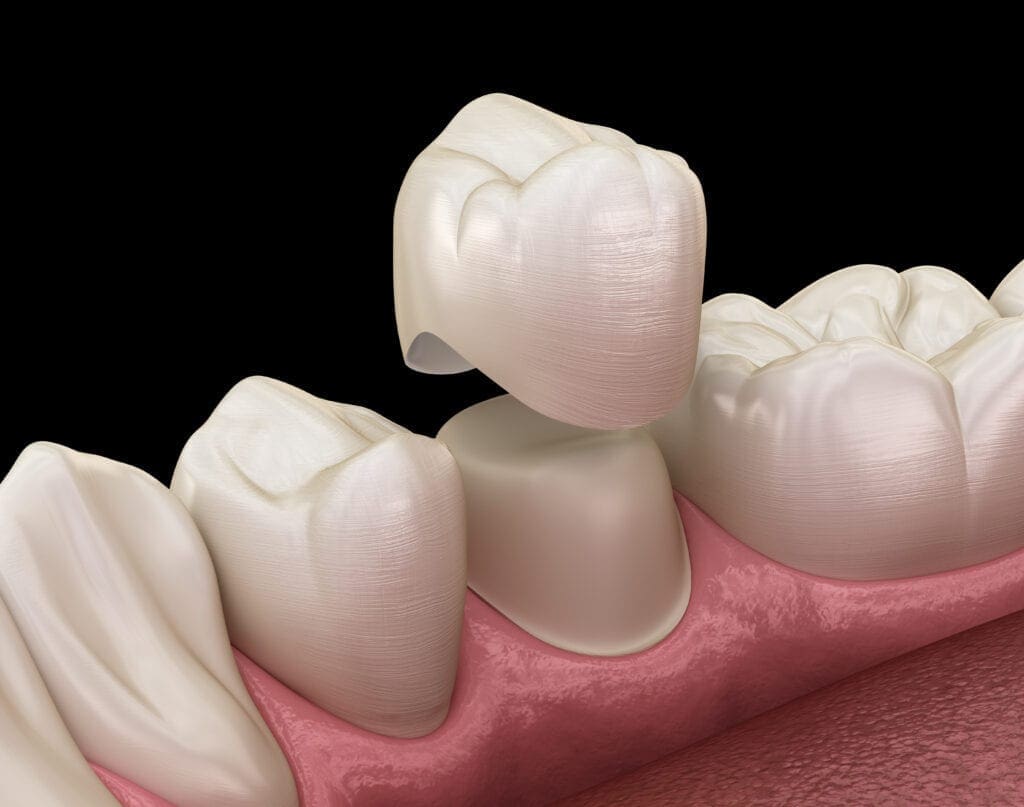Dental Crowns Seattle
Sometimes when a tooth’s structure is damaged, a crown is needed to cover and protect the area. Crowns act as a protective casing to help with bridges, implants, correct porous or misshaped teeth, protect a weak tooth, or restore fractured teeth. This permanent covering fits right over your original teeth with natural-looking ceramic and porcelain-made materials. Several other dental crowns, such as e-max crowns or durable gold crowns, are available and custom-made by a local dental laboratory.
Damaged teeth are strengthened with Crowns. The Crown will provide the tooth to function normally again. Crowns are composed of porcelain, also known as dental ceramics. Crowns are exactly like natural teeth. They appear very authentic and most people do not know the difference.
Purpose For Dental Crowns
- Can prevent a broken tooth from further damage
- Will hold together a previously cracked or broken tooth
- Support a large filling if there is substantial tooth decay or loss
- Hold a dental bridge in place
- Cover dental implant

Types of Crowns
Not all crowns are made of porcelain. Stainless steel and other metals are also used such as gold, resin, and ceramic. Porcelain is favored because the color is a genuine look that is more natural.
- E-Max crowns – E-Max crowns are disilicate lithium glass. They are light ceramic that is thin, strong, and aesthetically pleasing.
- Gold crowns – Gold crowns supplement back teeth restoration. The benefits of using gold crowns are their strength, durability, and inability to break.
- Porcelain-fused-to-metal – Commonly used ceramic crowns are porcelain. Porcelain is suitable for front teeth because it has the best appearance. Its color is equivalent to the natural color of teeth and looks real. It is the least sensitive to temperature changes, and although it is not the most durable choice, it is tough.
Dental Crown Procedure
First Visit
An x-ray will provide images to help take a closer look for tooth reshaping and to fit the temporary crown. The results of the x-ray will present a thorough look at both teeth and jawbone to be sure the area is clean and ready.
In order for the crown to fit properly over the tooth, the tooth is shaped. A file is used to shape the crown while any tooth decay will be addressed and managed at this time.
An impression will be made on both sides of your mouth so the bite is equal. A cast or model is formed from a paste-like putty that mimics the exact shape of your mouth.
Second Visit
It can take up to three weeks for the laboratory to make the new permanent crown.
An impression body, made from alginate impression material. Learn more about dental impressions here.
Video of Dental Crown Procedure
References:
- Dental Crowns Clevland Clinic: https://my.clevelandclinic.org/health/treatments/10923-dental-crowns
- WebMD: https://www.webmd.com/oral-health/guide/dental-crowns
- News/Medical Life Sciences: https://www.news-medical.net/health/Procedure-for-Dental-Crowns.aspx
Need help with dental crowns? Contact Us today.
